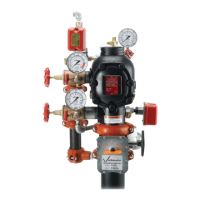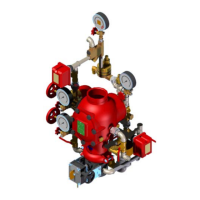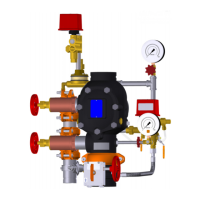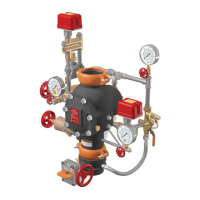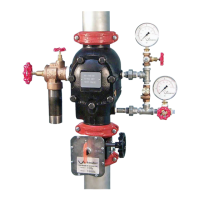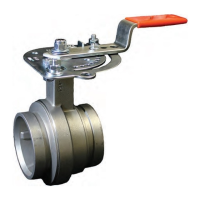FULLOPERATIONAL(TRIP)TEST
WARNING
Thebuildingownerortheirrepresentativeisresponsiblefor•
maintainingthefireprotectionsysteminproperoperating
condition.
Toensurepropersystemoperation,valvesmustbeinspected•
inaccordancewithcurrentNFPA-25requirementsorinaccor-
dancewiththerequirementsofthelocalauthorityhaving
jurisdiction(whicheverismorestringent).Alwaysrefertothe
instructionsinthismanualforadditionalinspectionandtesting
requirements.
Thefrequencyofinspectionsmustbeincreasedinthepres-•
enceofcontaminatedwatersupplies,corrosive/scalingwater
supplies,andcorrosiveatmospheres.
Depressurizeanddrainthepipingsystembeforeattemptingto•
install,remove,adjust,ormaintainanyVictaulicproducts.
Failuretofollowtheseinstructionscouldcausesystemfailure,
resultingindeath,seriouspersonalinjury,andpropertydamage.
Victaulic recommends the full operational (trip) test every 3 years (at
minimum). NOTE: The frequency of the full operational (trip) test must
be increased in the presence of contaminated water supplies, corrosive/
scaling water supplies, and corrosive atmospheres. This test allows a full
flow of water into the sprinkler system; therefore, this test must be per-
formed when there is no chance for freezing conditions. In addition, the
authority having jurisdiction in the area may require full operational (trip)
tests on a more frequent basis. Verify these requirements by contacting
the authority having jurisdiction in the affected area.
1. Notify the authority having jurisdiction, remote station alarm moni-
tors, and those in the affected area that the full operational (trip)
test will be performed.
2. Record the water supply pressure and system air pressure.
3. Open the water supply main drain valve fully to flush the water
supply of any contaminants.
4. Close the water supply main drain valve.
5. Tripthevalvebydoingoneofthefollowing:
a. Energize the solenoid valve
b. Relieve the air pressure from the pilot line
c. Open the manual pull station
6. Record the following:
a. Time between opening the remote system test valve
(i nspector’s test connection) to the operation of the valve
b. FORPNEUMATIC(DRYPILOT)RELEASESYSTEMS:
System air pressure when the valve operated
c. Time from opening the remote system test valve ( inspector’s
test connection) to when water flows from the test
connection’s outlet
d. All information required by the authority having jurisdiction
7. Confirm that all alarms operate properly.
8. Continue to run water until it is clear.
